Abstract
Two experiments are reported in which the relationship between compliance with "do" and "don't" requests was examined with developmentally disabled children. In Experiment 1, a multiple baseline design across subjects with counterbalanced treatment conditions was used to evaluate a compliance training program composed of four phases: (a) baseline, during which no consequences were delivered for compliance, (b) reinforcement for compliance with one targeted "do" request, (c) reinforcement for compliance with one targeted "don't" request, and (d) follow-up with reinforcement on a variable ratio schedule for compliance with any "do" or "don't" request. Results of probes conducted before and after training within each condition indicated that generalized compliance occurred only with requests of the same type as the target exemplar ("do" or "don't"). In Experiment 2, these results were replicated in a classroom setting. Following collection of baseline probe data on student compliance, a teacher training program was successfully implemented to increase reinforcement of compliance first with one "do" and subsequently with one "don't" request of a target student. Results of multiple baseline probes across "do" and "don't" requests indicated that the teacher generalized and maintained reinforcement of compliance with other requests of the same type and to other students, with a resulting increase in student compliance with the type of requests reinforced. The impact of treatment on both teacher and student behavior was socially validated via consumer ratings. Implications of these findings with respect to response class formation and compliance training programs are discussed.
Full text
PDF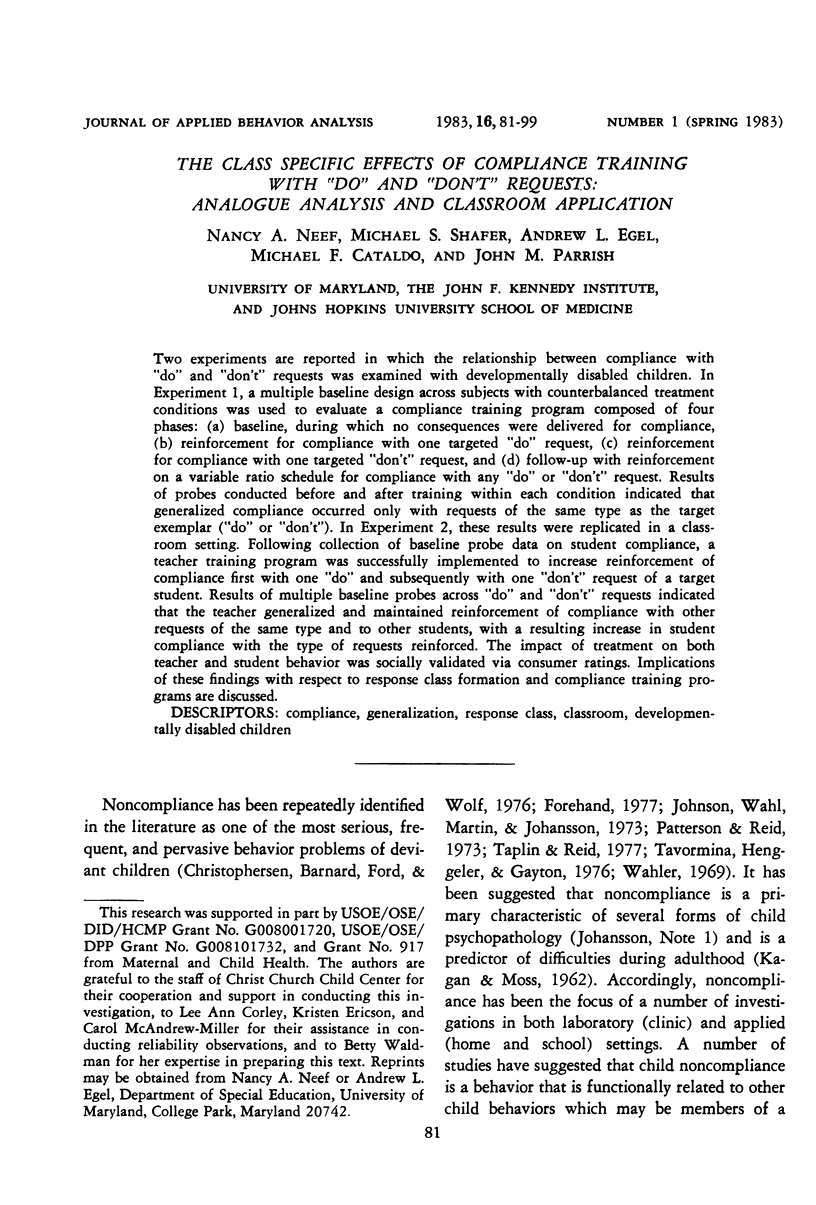

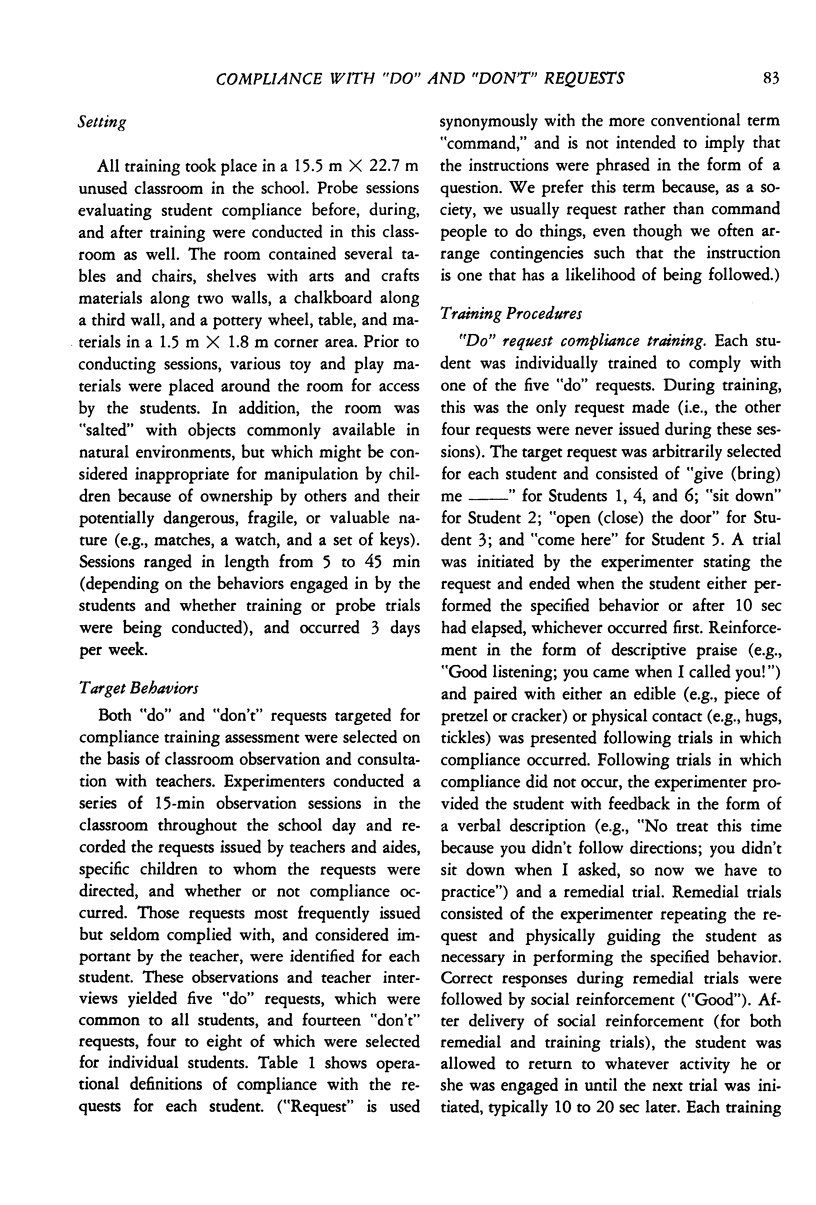
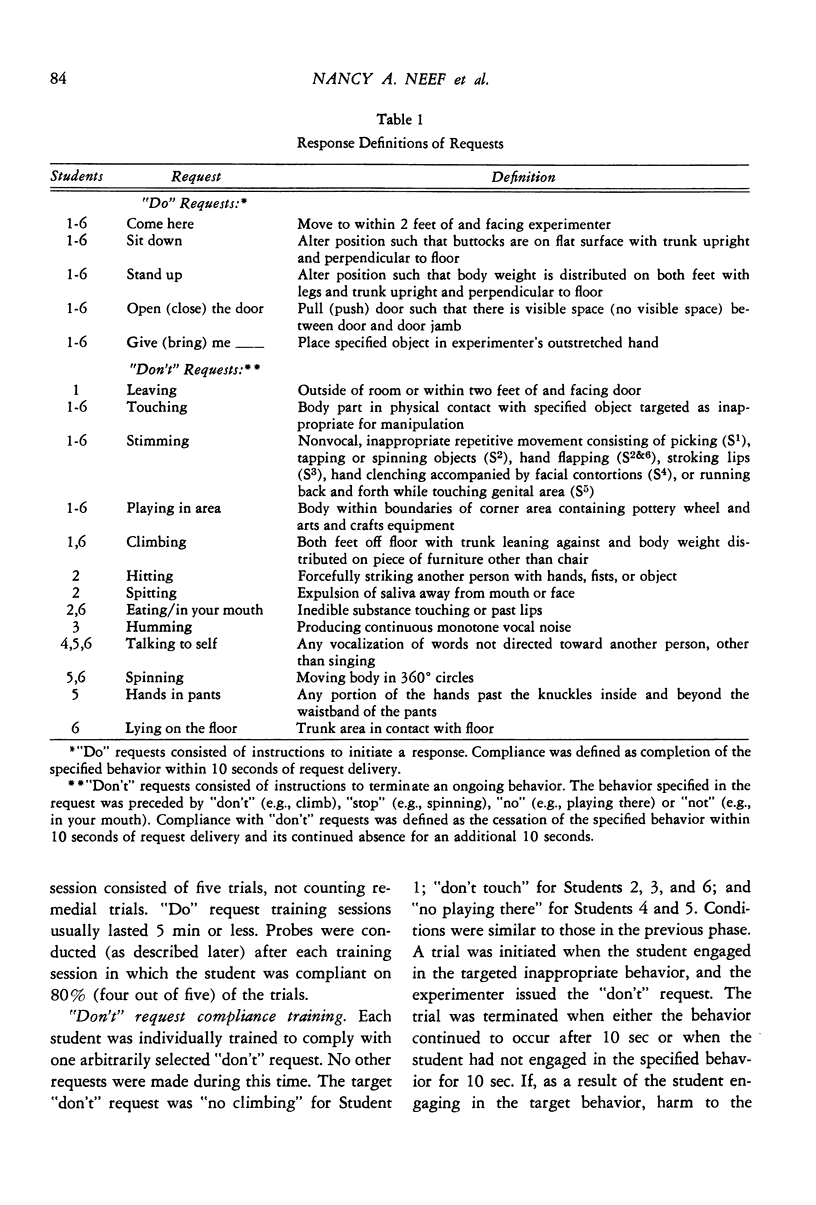
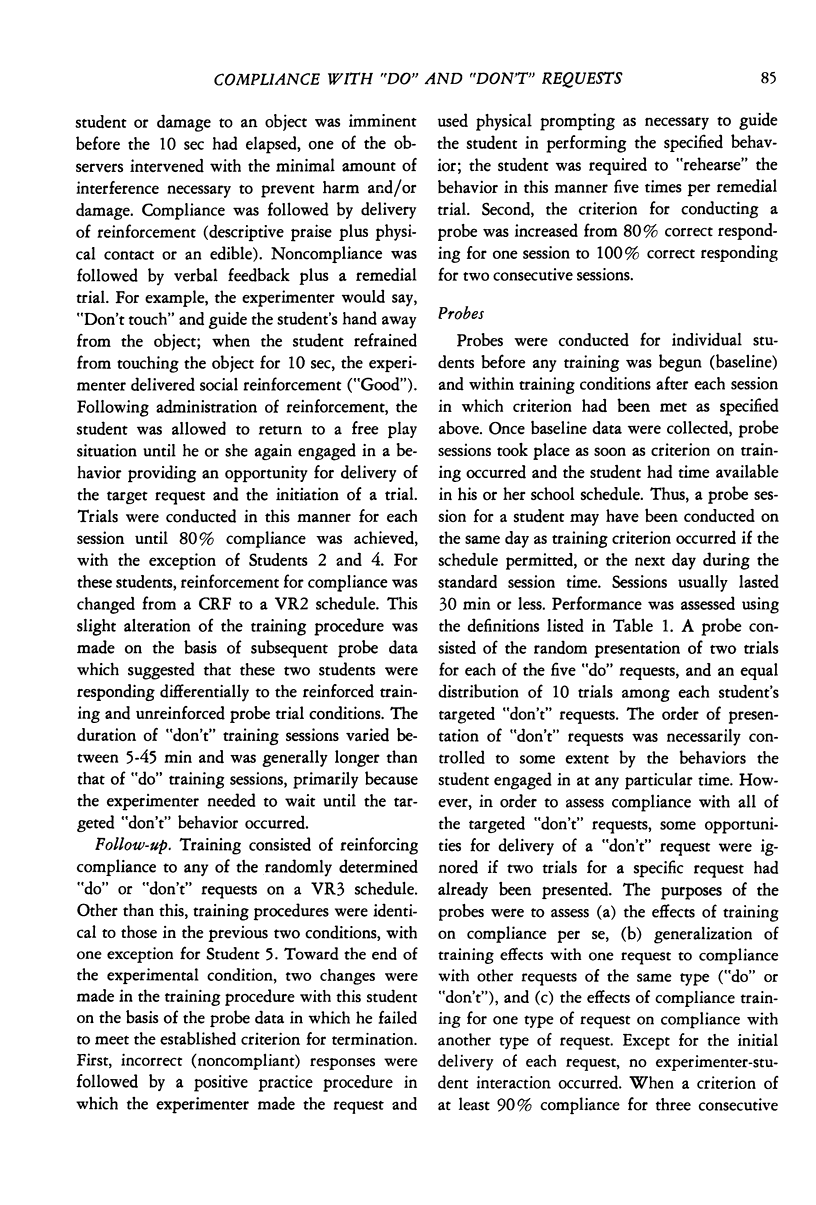
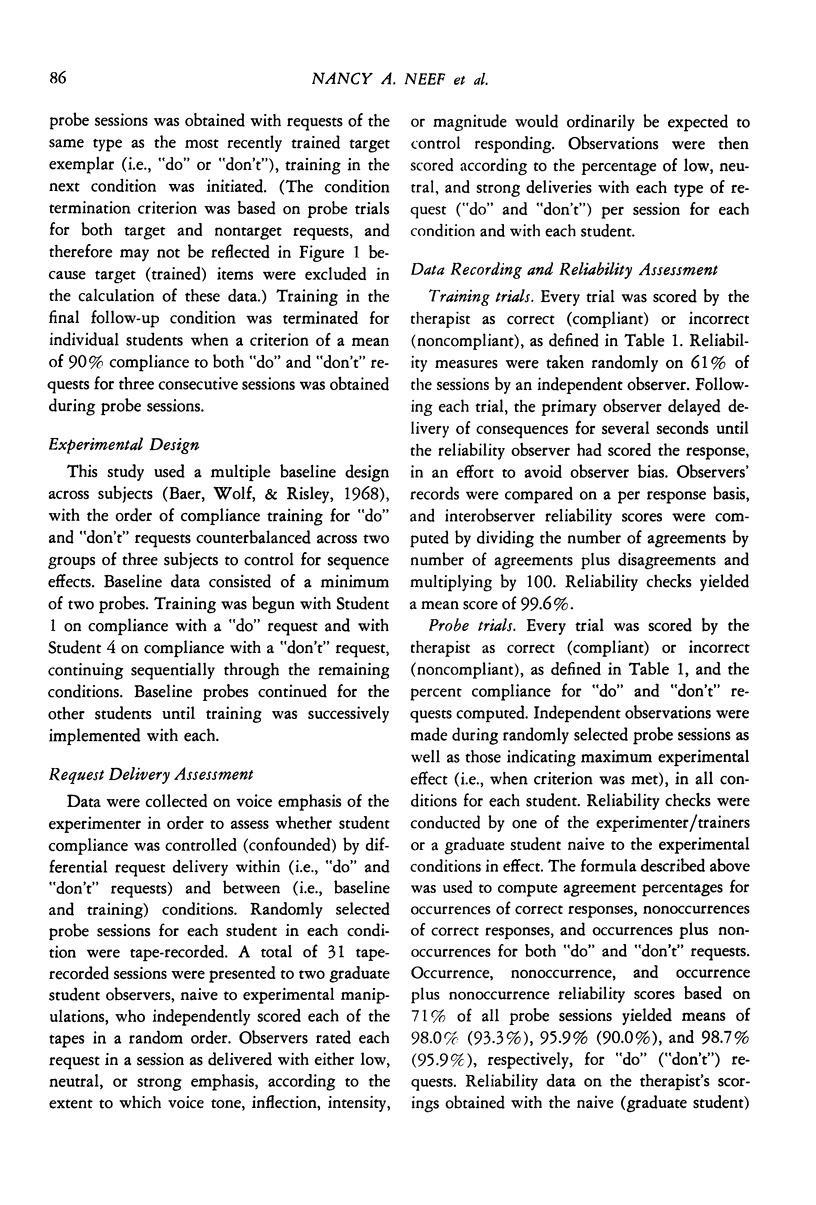

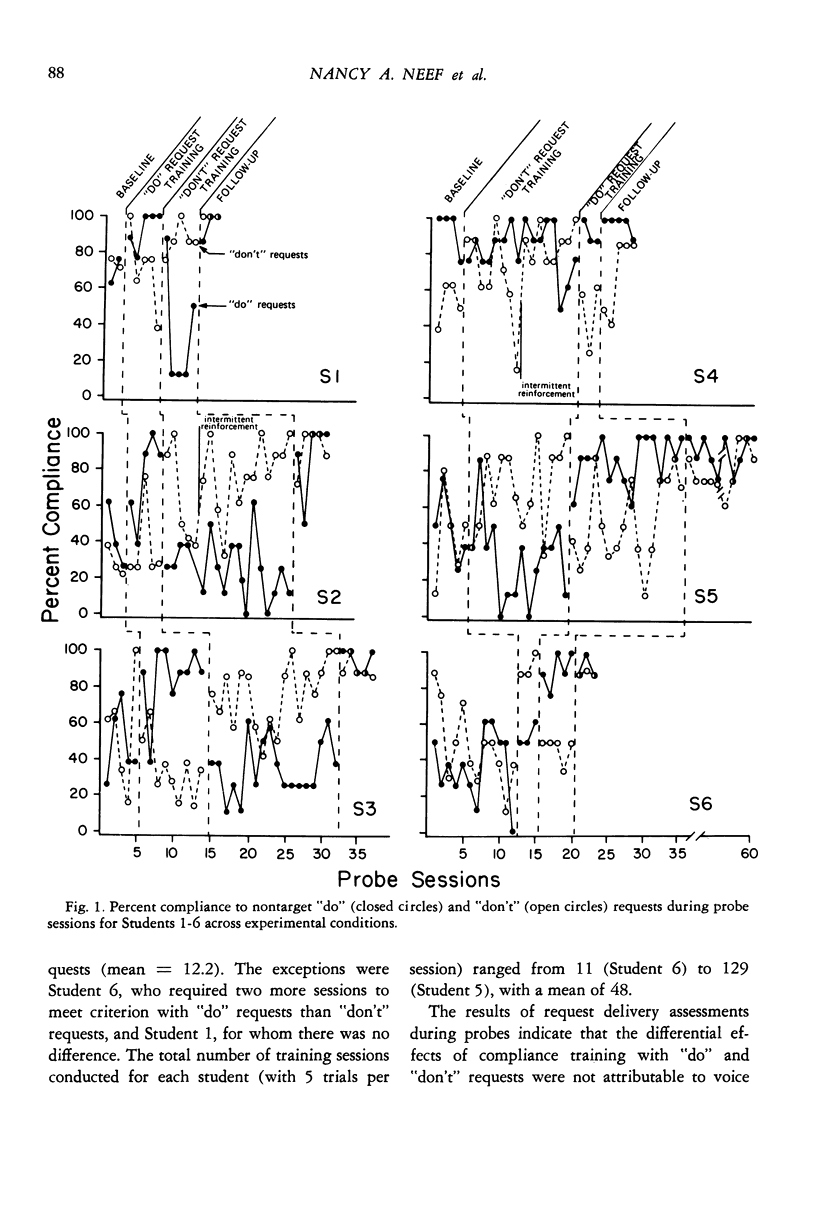

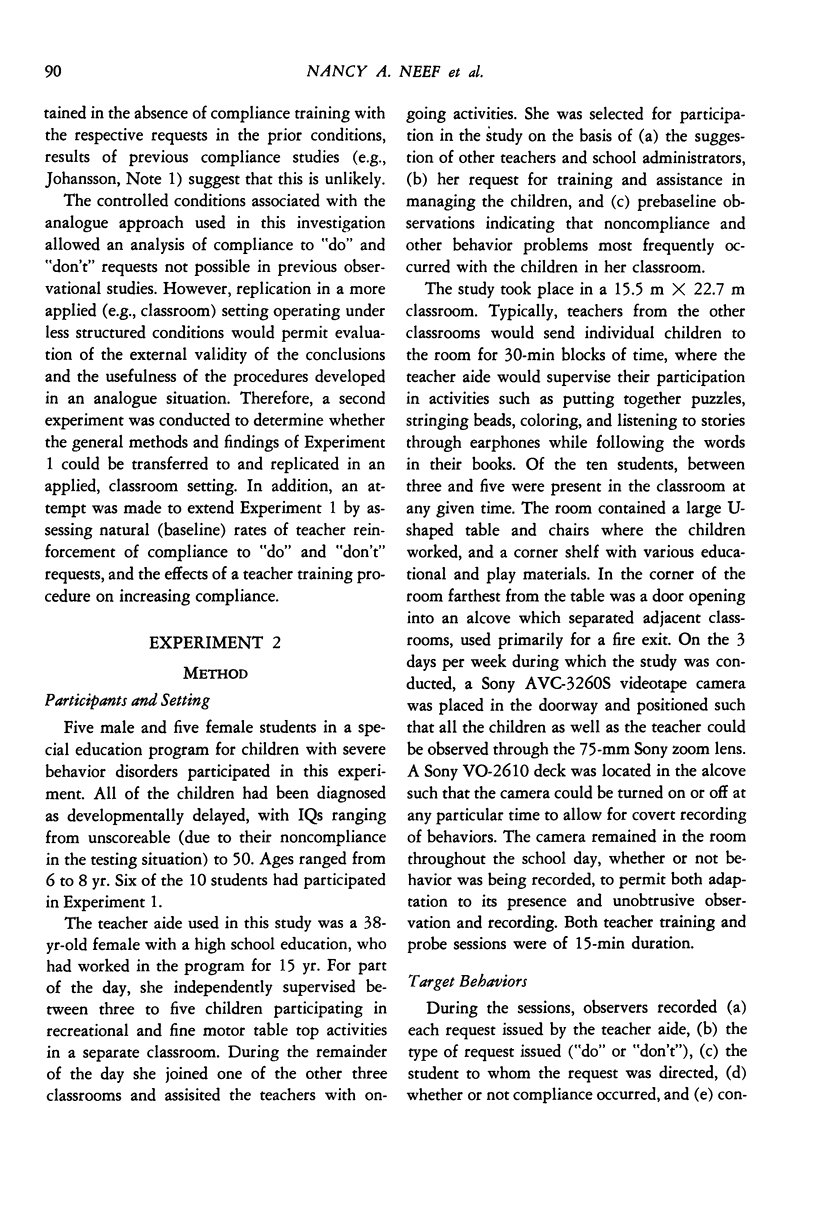
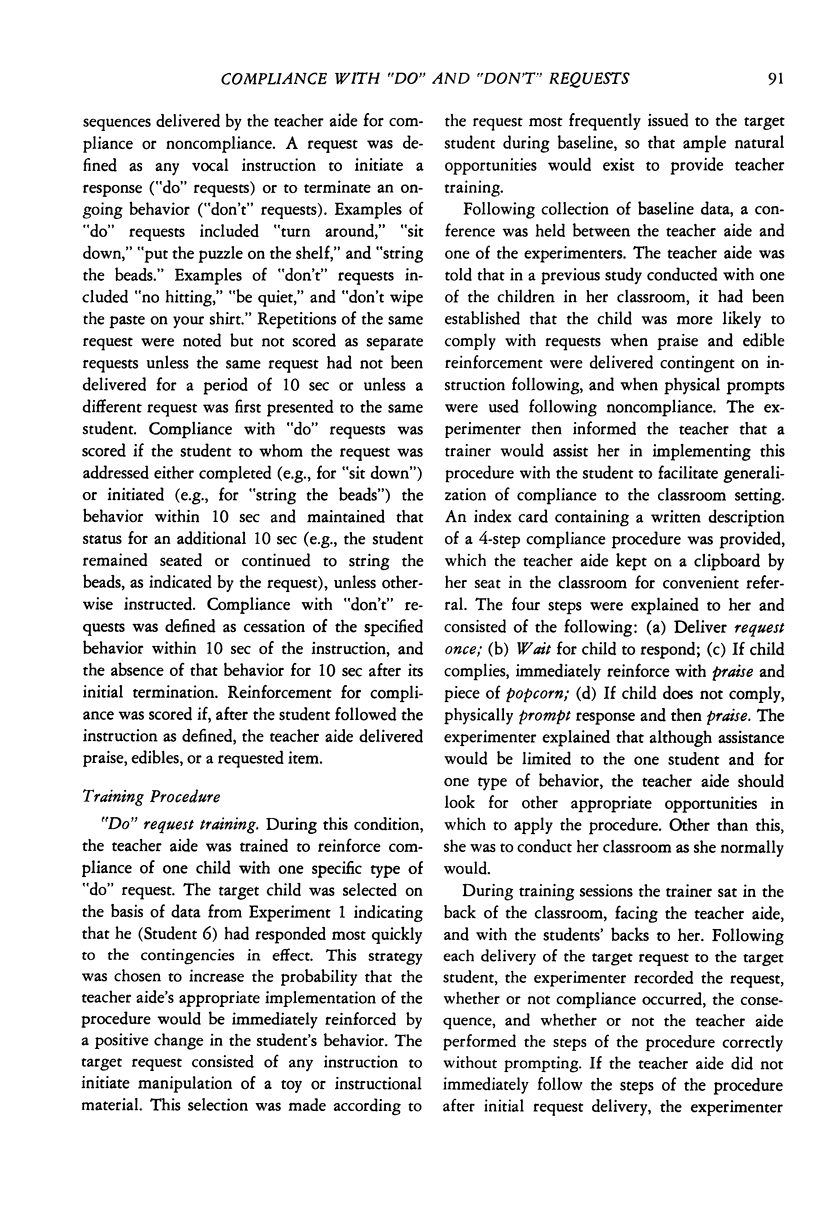
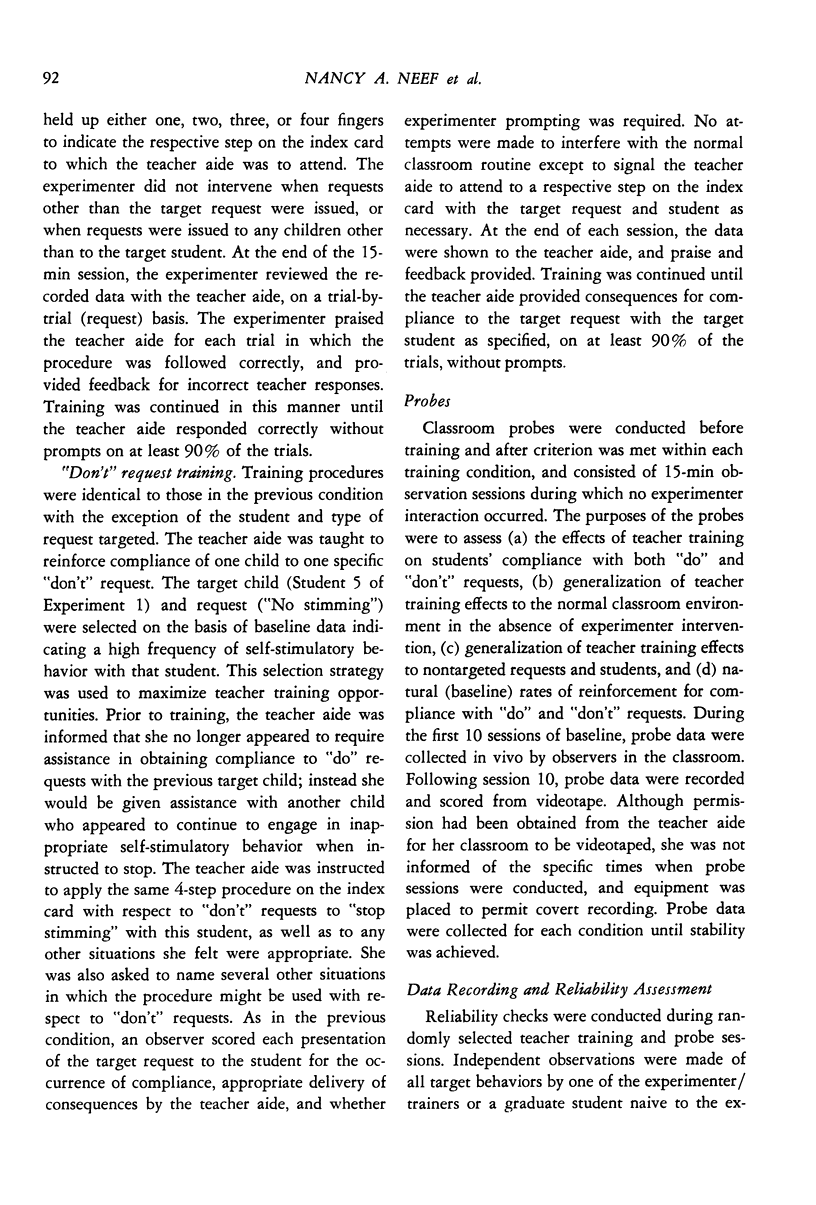
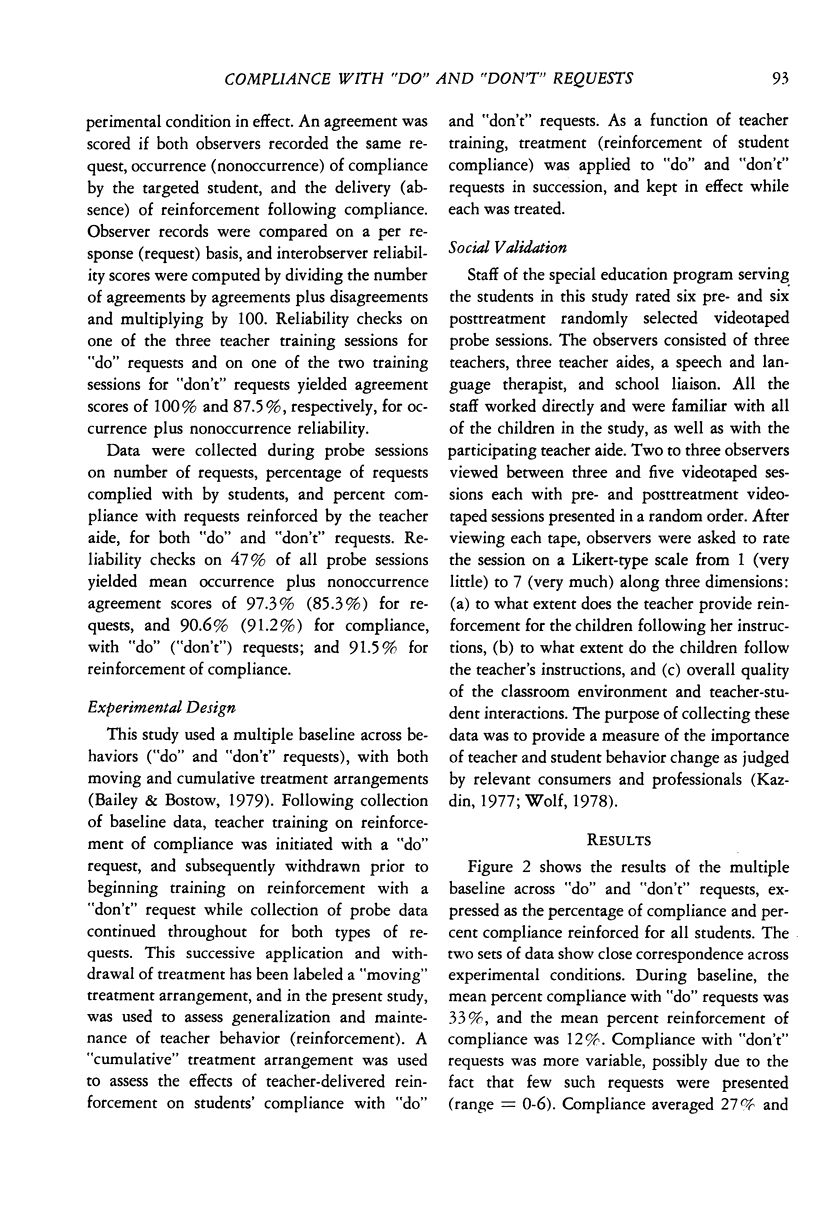
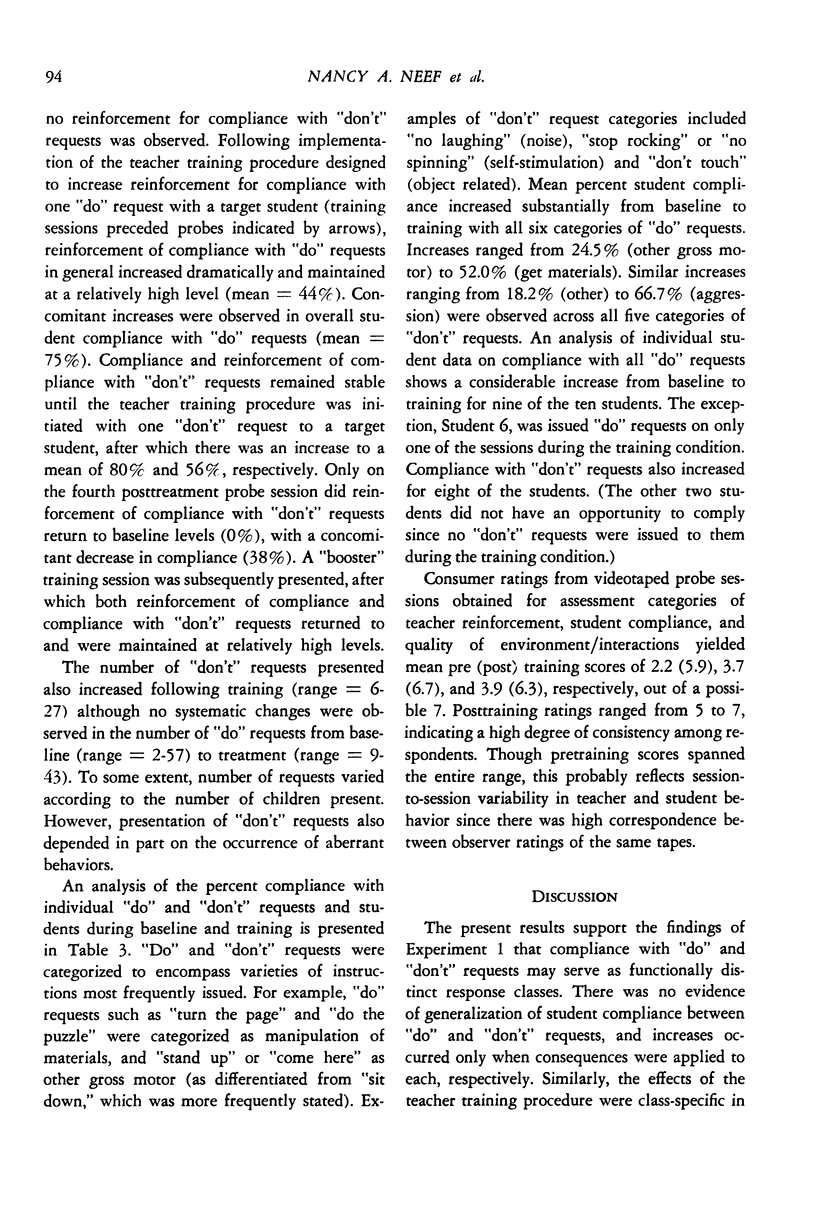
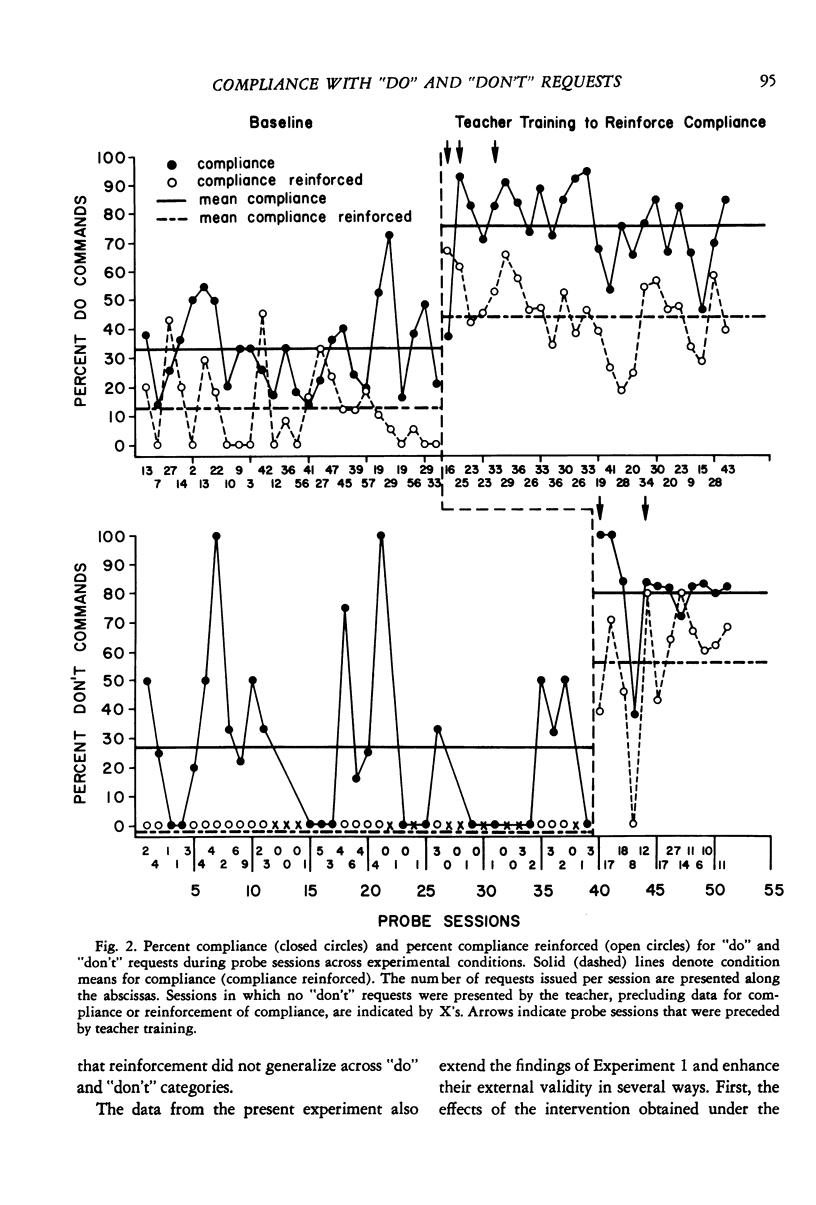
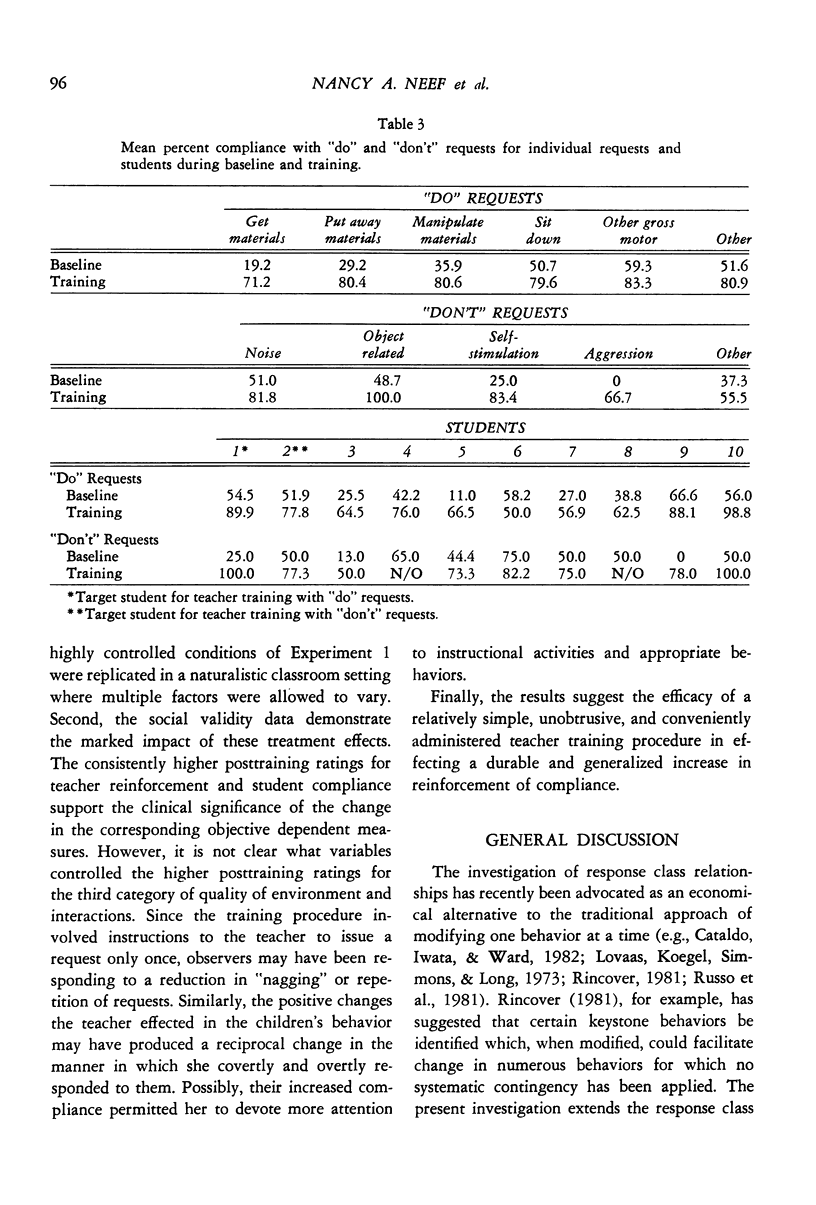
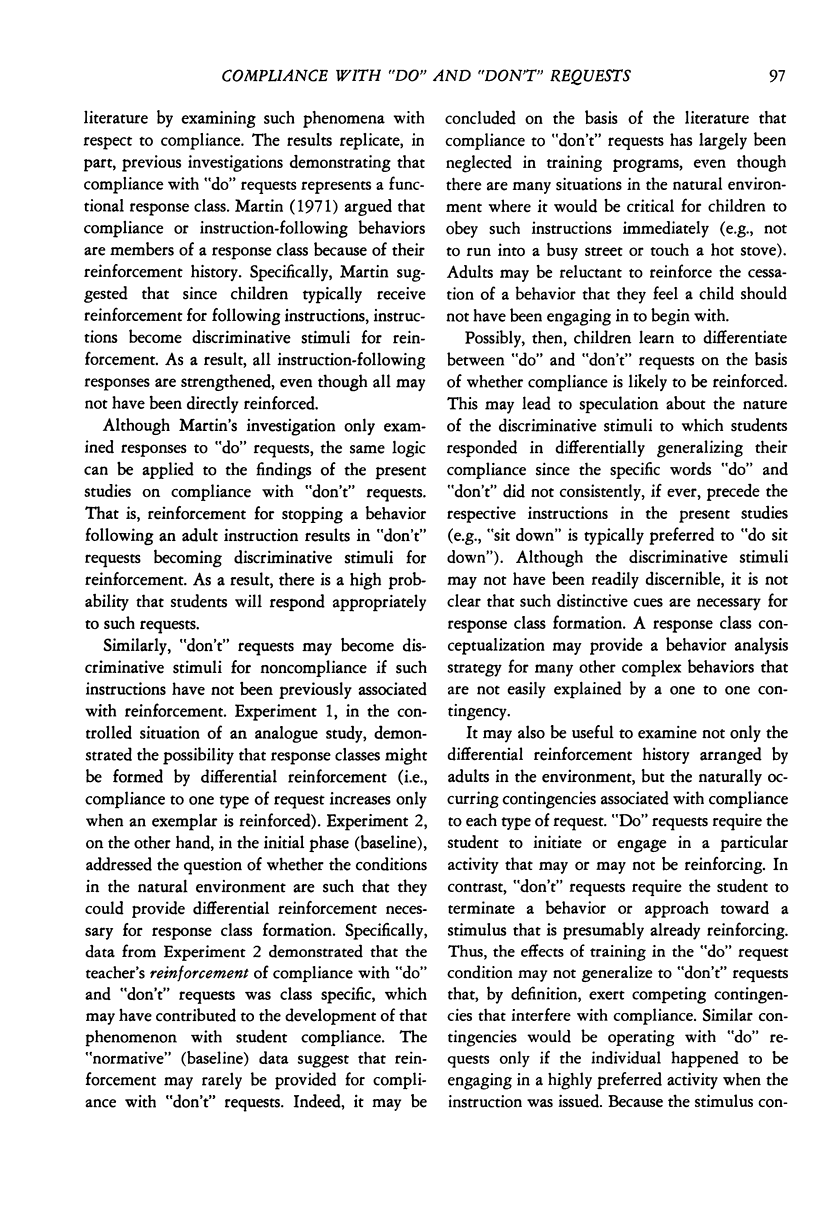
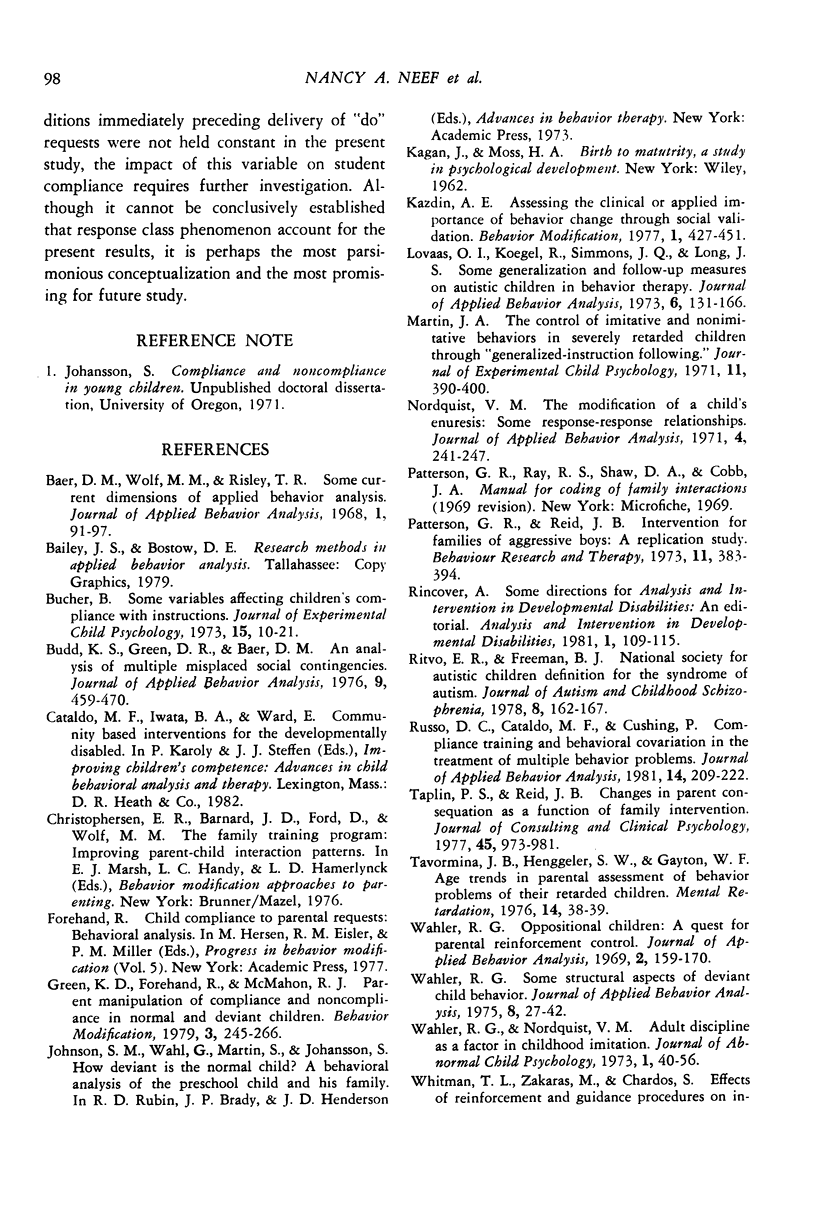
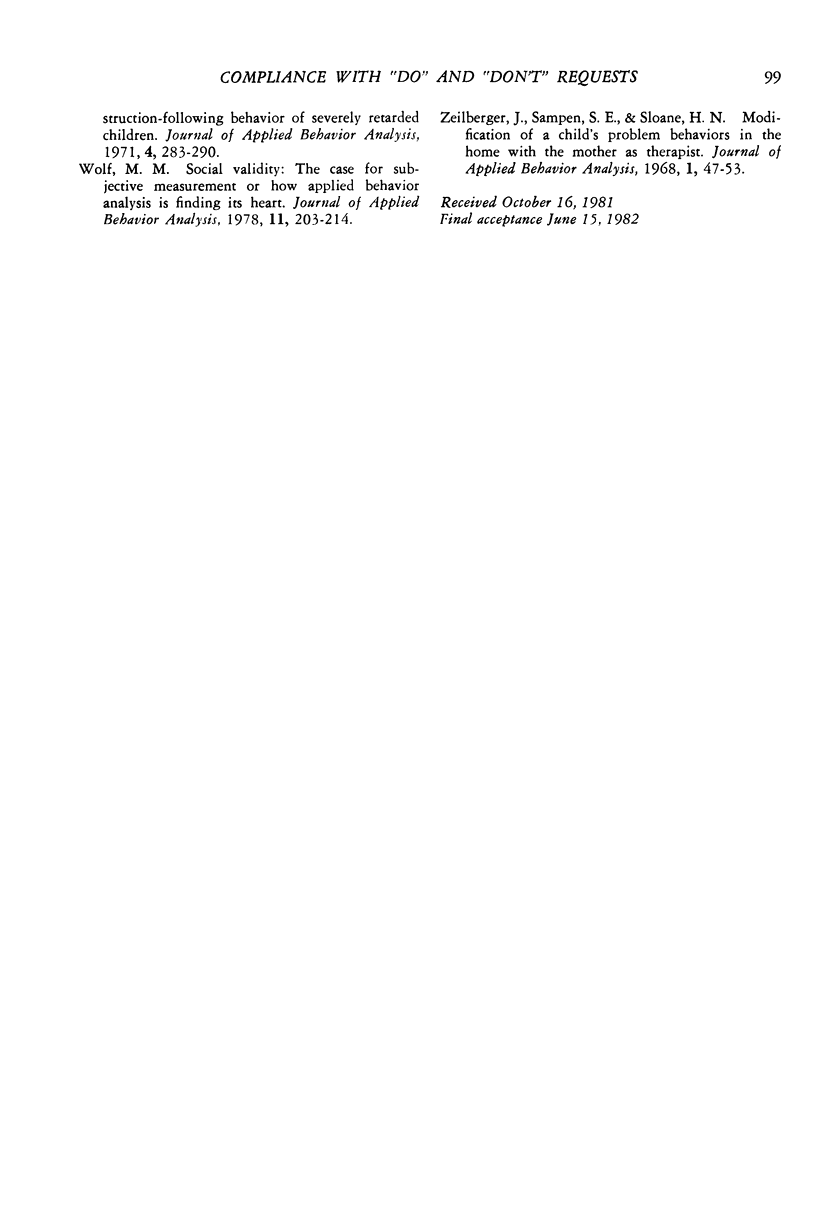
Selected References
These references are in PubMed. This may not be the complete list of references from this article.
- Baer D. M., Wolf M. M., Risley T. R. Some current dimensions of applied behavior analysis. J Appl Behav Anal. 1968 Spring;1(1):91–97. doi: 10.1901/jaba.1968.1-91. [DOI] [PMC free article] [PubMed] [Google Scholar]
- Budd K. S., Green K. R., Baer D. M. An analysis of multiple misplaced parental social contingencies. J Appl Behav Anal. 1976 WINTER;9(4):459–470. doi: 10.1901/jaba.1976.9-459. [DOI] [PMC free article] [PubMed] [Google Scholar]
- Lovaas O. I., Koegel R., Simmons J. Q., Long J. S. Some generalization and follow-up measures on autistic children in behavior therapy. J Appl Behav Anal. 1973 Spring;6(1):131–165. doi: 10.1901/jaba.1973.6-131. [DOI] [PMC free article] [PubMed] [Google Scholar]
- Martin J. A. The control of imitative and nonimitative behaviors in severely retarded children through "generalized-instruction following". J Exp Child Psychol. 1971 Jun;11(3):390–400. doi: 10.1016/0022-0965(71)90044-0. [DOI] [PubMed] [Google Scholar]
- Nordquist V. M. The modification of a child's enuresis: some response-response relationships. J Appl Behav Anal. 1971 Fall;4(3):241–247. doi: 10.1901/jaba.1971.4-241. [DOI] [PMC free article] [PubMed] [Google Scholar]
- Patterson G. R., Reid J. B. Intervention for families of aggressive boys: a replication study. Behav Res Ther. 1973 Nov;11(4):383–394. doi: 10.1016/0005-7967(73)90096-x. [DOI] [PubMed] [Google Scholar]
- Russo D. C., Cataldo M. F., Cushing P. J. Compliance training and behavioral covariation in the treatment of multiple behavior problems. J Appl Behav Anal. 1981 Fall;14(3):209–222. doi: 10.1901/jaba.1981.14-209. [DOI] [PMC free article] [PubMed] [Google Scholar]
- Taplin P. S., Reid J. B. Changes in parent consequences as a function of family intervention. J Consult Clin Psychol. 1977 Dec;45(6):973–981. doi: 10.1037//0022-006x.45.6.973. [DOI] [PubMed] [Google Scholar]
- Tavormina J. B., Henggeler S. W., Gayton W. F. Age trends in parental assessments of the behavior problems of their retarded children. Ment Retard. 1976 Feb;14(1):38–39. [PubMed] [Google Scholar]
- Wahler R. G. Oppositional children: a quest for parental reinforcement control. J Appl Behav Anal. 1969 Fall;2(3):159–170. doi: 10.1901/jaba.1969.2-159. [DOI] [PMC free article] [PubMed] [Google Scholar]
- Wahler R. G. Some structural aspects of deviant child behavior. J Appl Behav Anal. 1975 Spring;8(1):27–42. doi: 10.1901/jaba.1975.8-27. [DOI] [PMC free article] [PubMed] [Google Scholar]
- Whitman T. L., Zakaras M., Chardos S. Effects of reinforcement and guidance procedures on instruction-following behavior of severely retarded children. J Appl Behav Anal. 1971 Winter;4(4):283–290. doi: 10.1901/jaba.1971.4-283. [DOI] [PMC free article] [PubMed] [Google Scholar]
- Wolf M. M. Social validity: the case for subjective measurement or how applied behavior analysis is finding its heart. J Appl Behav Anal. 1978 Summer;11(2):203–214. doi: 10.1901/jaba.1978.11-203. [DOI] [PMC free article] [PubMed] [Google Scholar]
- Zeilberger J., Sampen S. E., Sloane H. N. Modification of a child's problem behaviors in the home with the mother as therapist. J Appl Behav Anal. 1968 Spring;1(1):47–53. doi: 10.1901/jaba.1968.1-47. [DOI] [PMC free article] [PubMed] [Google Scholar]


